Whether you are foraging for your owns ramps—the native North American onion that is all the rage in spring—or buying them at a market, extending their fleeting and precious season by making ramp leaf oil allows you to enjoy their intensity for many months. The vivid, verdant oil can be frozen in jars and scooped out as needed.
Ramp leaf oil brightens humble dishes like and eggs and toast, and elevates soups and casseroles to culinary stardom. Making the most of ramp leaves also shifts the focus from their bulbs, whose over-harvest in the wild continues at a commercial scale. Here are two ways to make ramp leaf oil: raw, and roasted.
Photography by Marie Viljoen.
Above: A hillside covered in ramps—Allium tricoccum.
If you are wild-harvesting ramps (rather than buying them or growing them), collect them conservatively, and focus on the leaves.
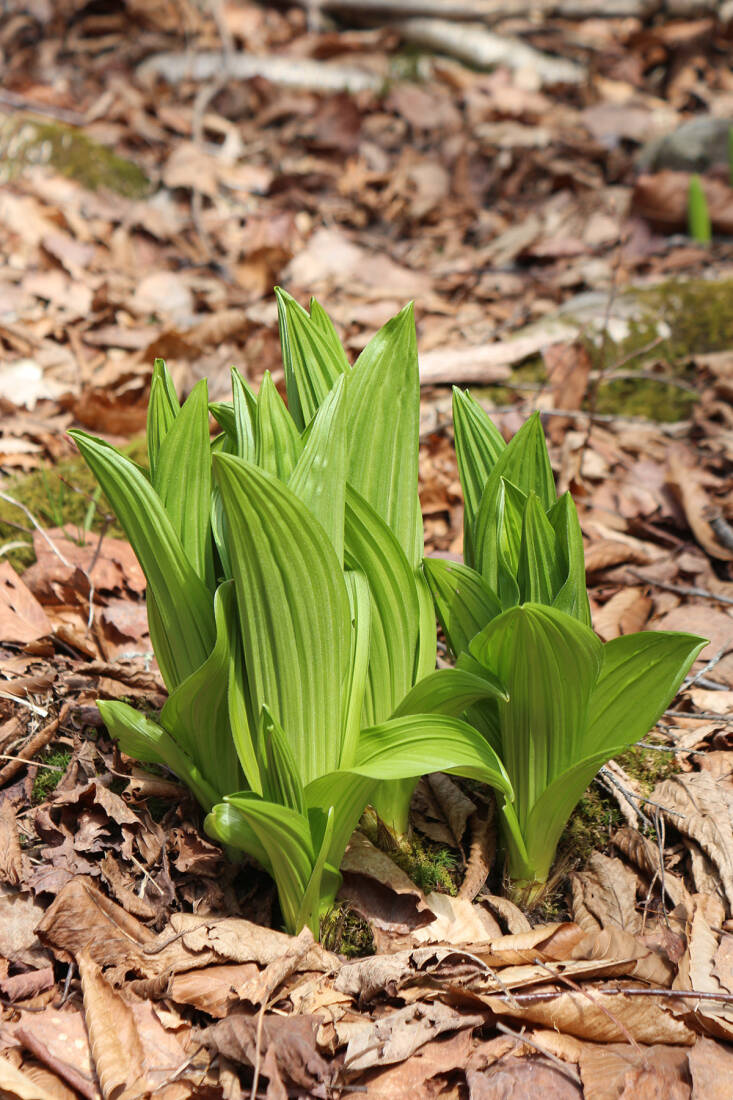 Above: These are not ramps. False hellebore is a very toxic plant that is sometimes mistaken for ramps.
Above: These are not ramps. False hellebore is a very toxic plant that is sometimes mistaken for ramps.
An aside: Because ramp-acquisition fever is real, it inspires people who are unfamiliar with plants in general to forage for them. This can lead to unpleasant consequences. The new foliage of false hellebore (Veratrum viride), emerges at the same time as ramps and can resemble ramp leaves, superficially. The tell-tale difference is the false hellebore’s distinctively pleated leaves; ramp leaves are smooth. Also, all wild onions smell strongly like onions, so even if you disbelieve your eyes (and your apps), believe your nose. No onion smell? It’s not a ramp. Consuming this ramp lookalike will make the eater dangerously ill, requiring immediate medical intervention.
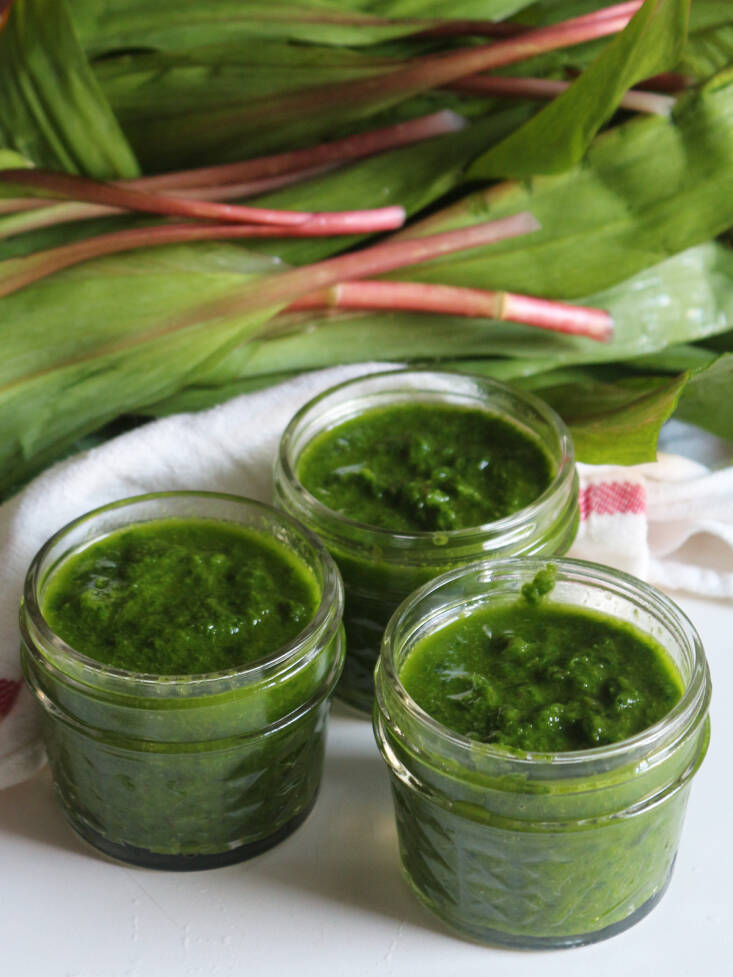 Above: Fresh ramp leaf oil, before freezing.
Above: Fresh ramp leaf oil, before freezing.
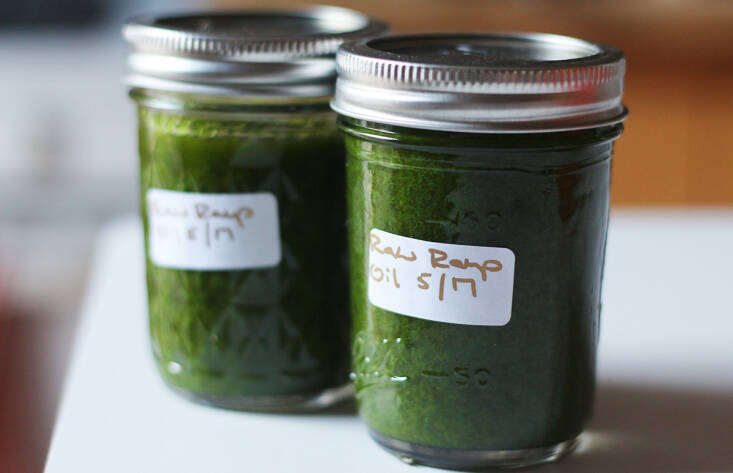 Above: I make two versions of ramp leaf oil—raw, and roasted. Both last indefinitely in the freezer.
Above: I make two versions of ramp leaf oil—raw, and roasted. Both last indefinitely in the freezer.
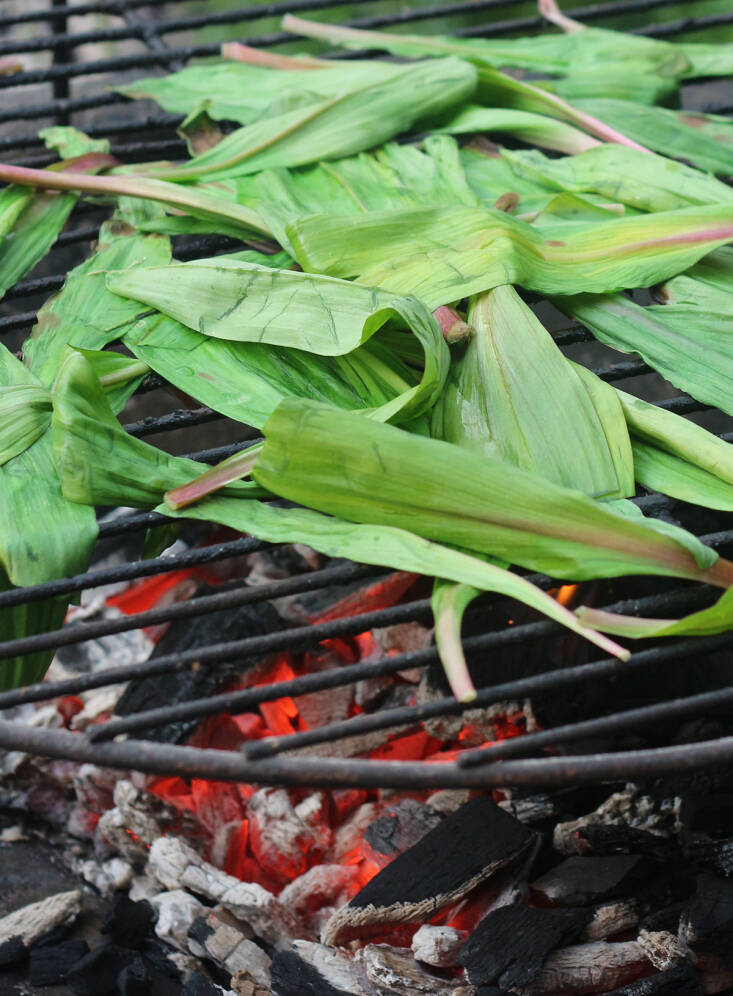 Above: Charring ramp leaves slightly adds remarkable depth of flavor to the oil.
Above: Charring ramp leaves slightly adds remarkable depth of flavor to the oil.
Use ramp leaf oil like this:
- Basted onto grilled steaks, fish, and mushrooms.
- Whisked into salad dressings.
- Schmeared onto toast.
- Dabbed onto eggs.
- Swirled into mashed potatoes.
- Drizzled onto potato salad.
- Slathered onto a slab of feta before baking.
- Stirred into soup, like green bouillon cube.
 Above: Baked eggs beg for a dab of ramp leaf oil.
Above: Baked eggs beg for a dab of ramp leaf oil.
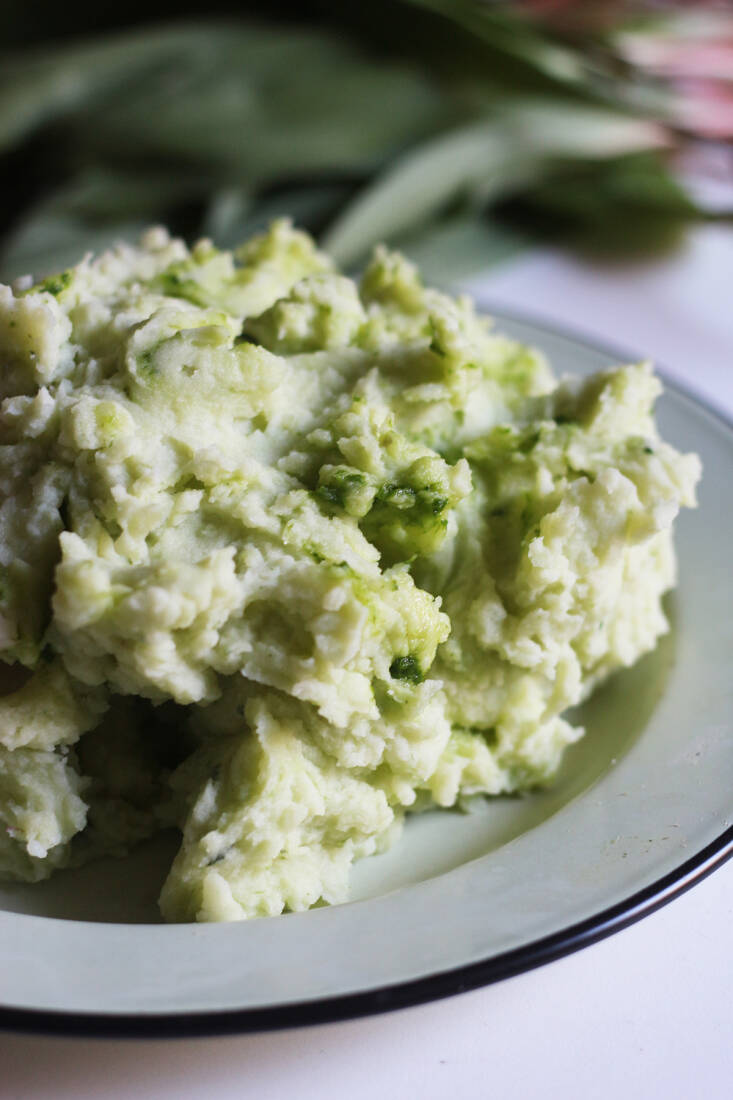 Above: Stir ramp leaf oil into smooth mashed potatoes.
Above: Stir ramp leaf oil into smooth mashed potatoes.
You can make this oil with any allium leaves, from domestic chives to scallions, to other wild onions, like invasive field garlic.
Roast Ramp Leaf Oil
Adapted from Forage, Harvest, Feast – A Wild-Inspired Cuisine (Chelsea Green Publishing).
Makes 3 x 4-oz jars
A quick char over coals adds smoky depth to ramp leaf oil.
It is imperative to keep this, and any other oil made with fresh produce, in the fridge or freezer, never on a countertop.
- 6 oz ramp leaves, washed and dried
- 1 cup avocado oil
Wilt the ramp leaves over coals or on a gas barbecue until very lightly browned at the edges—about 5 to 8 minutes. Turn the leaves over with tongs. Leave another minute over the coals, then remove to a plate and spread out to cool.
Pulse the ramp leaves in the bowl of a food processor with the cup of oil until perfectly smooth. Bottle in sterilized jars. Keep in the fridge or freeze until needed. To use, simply scoop out a spoonful at a time.
How about raw ramp leaf oil? It’s exactly the same, minus the…you guessed it: roasting. Simply pulse the raw leaves with the oil until smooth, and then bottle as above.
You may also like:



